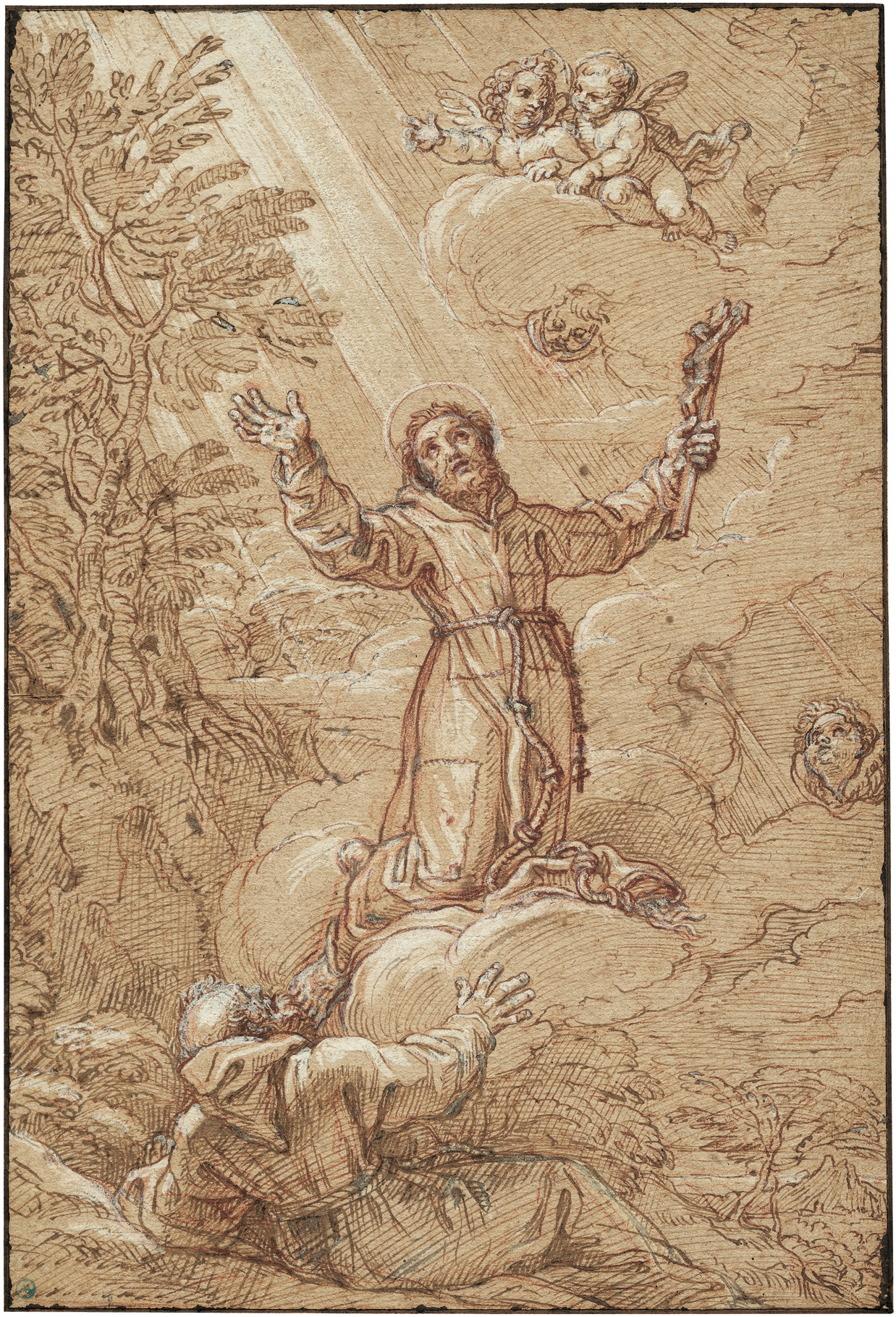Loading the page ...
Michel Corneille the Younger
(1642–1708, Paris)
Saint Francis of Assisi Receiving the Stigmata. Pen and brown ink, red chalk, white heightening. 38.5 x 28 cm.
Corneille’s style is marked by the strongly Italianate character of his draughtsmanship. His first teacher was his father, Michel l’Ancien (1603 Orléans – 1664 Paris), and later he received a sound academic training from Pierre Mignard and Charles Le Brun. In 1659 the young artist was awarded the Rome Prize of the Académie Royale de Peinture et de Sculpture and he was to live and work in the Eternal City till 1663. His familiarity with the work of such great predecessors as Annibale Carracci and Domenichino had a lasting effect on his style. In 1663, after his return to Paris, Corneille was admitted to membership of the Academy. In the subsequent period he made a name for himself as a painter of religious compositions. In addition to these easel paintings Corneille also devoted himself to monumental painting and – together with such other Academy members as Charles de Lafosse, the Bon brothers, Louis de Boullogne and Jean Jouvenet – was charged by Louis XIV with the interior decoration of numerous châteaux. The special patronage of the architect Jules Hardouin- Mansart was probably very helpful for his later career.
Corneille left behind a very extensive drawn and printed oeuvre. According to Mariette, he was a keen draughtsman and throughout his life busied himself with studies after the Italian masters. A substantial corpus of drawn copies after 16th and 17th century Italian masters was in the possession of the banker and connaisseur Everhard Jabach, who had assembled in Paris one of the largest private collections of his day. Jabach owned more than 300 drawn copies by Corneille, most of which are now kept in the Paris Louvre. The stylish élan of his drawing style, which Corneille acquired by exercising in this way, is clearly evident in the present drawing, which is impressive for its clarity of vision and the classic nature of the composition. Floating on a cloud, Saint Francis receives the stigmata humbly with outstretched arms, while a host of little angels eagerly look on. Blinded by the celestial light, a companion of the saint lies at his feet. Landscape and clouds are swept by storms. Figures and landscape elements have been skilfully blended to create a very vivid whole. Corneille’s penwork is forceful, effective and varied. The main parts of the composition have been set out swiftly and boldly in brown pen. Rapid, simple cross and parallel hatchings are used to achieve different chiaroscuro effects and shadings. Then the artist uses red chalk to firm up the outlines of the figures and pick out individual details. The deft and effective use of white heightening is of great graphic power and lends the work additional lustre. A comparable drawing in stylistic terms showing the Assumption of the Virgin is in the collection of the Metropolitan Museum of Art, New York (see J. Bean, 15th – 18th Century French Drawings in the Metropolitan Museum of Art, New York 1986, p. 75, no. 75).
Verso with inscription in pen and black ink: “No 1230 Collection Peyron”; with the stamp of the Société de l’Alliance des Arts, Paris (Lugt 61).
Contact us for further information